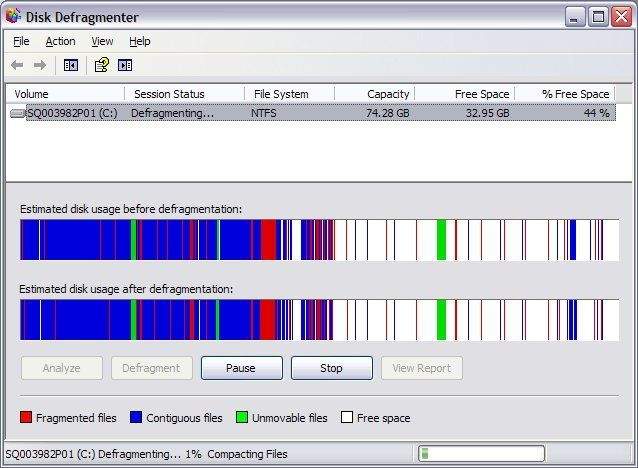1. Prepare your computer for the defragmentation

Defragment your computer.
Before you defragment your computer, there are a few steps you must take first. Read this entire process before you use the defrag utility.
Windows operating system will put files and programs on the hard drive where there is space; A file will not necessarily be placed in a physical place. A hard drive can become fragmented with hundreds of corrupt files in multiple locations on the drive over time. Ultimately, this can slow down a computer’s response time as it takes longer to access information. That’s why using a defragmentation program can play an essential role in speeding up your computer.
The defragmentation process puts all the parts of a file together in the same place on the drive. It organizes all folders and files according to the way you use your computer. Once this process is completed, your computer will run faster.
To start this process, perform the following steps:
- Make sure your work is backed up to other media – copy or back up all work files, photos, emails, etc., to a hard drive, CDROM, DVD, or other media type.
- Make sure your hard drive is healthy – use CHKDSK to scan and repair the drive.
- Close currently open programs – including virus scanner and other programs with icons in the system tray (right-hand side of the taskbar)
- Ensure your computer has an uninterrupted power supply – It is essential to stop defragmentation if there is a power outage. If you use a defragmentation program without back up your battery, don’t use it.
Note: If your computer doesn’t shut down while defragmentation, it could crash the hard drive or damage the operating system, or both.
Defragment your hard drive
To defragment your computer, follow the step-by-step instructions in this guide.
2. Open the Defrag program.
Defragment your computer.
- Click the Start button.
- Find the Disk Defragmentation program and open it.
- Click the Programs icon
- Click the Accessories icon
- Click the System Tools icon
- Click on the Disk Defragmentation icon
- Determine if you need to Defrag your drive
Determine if you need Defrag.
- Click the Analyze button – the program will analyze your hard drive.
- Do what the result screen says – If it says your hard drive does not need defragmentation, you probably won’t benefit from its implementation. You can close the program. If not, continue to the next step.
- Defragment your hard drive.
- If the program says that your hard drive needs defragmentation, click the Defragment button.
- Allow the program to do its job. It will take anywhere from 30 minutes to several hours to defragment your hard drive depending on: the size of the drive, the amount of fragmentation, your processing speed, the amount of your working memory. , etc.
- When the program has finished, close the program window. If there are any error messages, note the error and print the log of this process for future maintenance or repair of the hard drive.
Determine if you need Defrag.
- Click the Analyze button – the program will analyze your hard drive.
- Do what the result screen says – If it says your hard drive does not need defragmentation, you probably won’t benefit from its implementation. You can close the program. If not, continue to the next step.
- Defragment your hard drive.
- If the program says that your hard drive needs defragmentation, click the Defragment button.
- Allow the program to do its job. It will take anywhere from 30 minutes to several hours to defragment your hard drive depending on: the size of the drive, the amount of fragmentation, your processing speed, the amount of your working memory. , etc.
- When the program has finished, close the program window. If there are any error messages, note the error and print the log of this process for future maintenance or repair of the hard drive.





